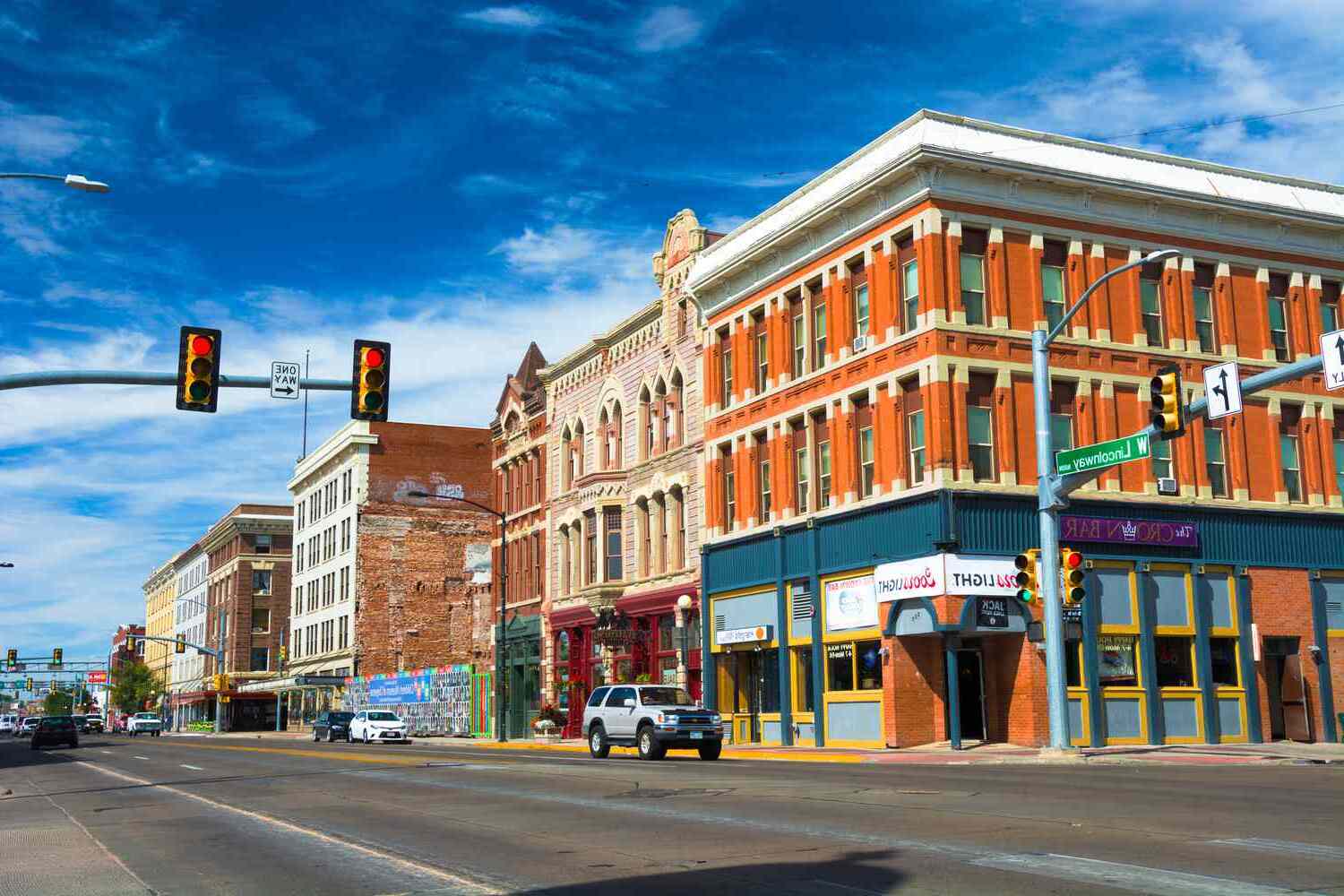
Cheyenne, Wyoming—a city brimming with history, culture, and natural beauty. Ever wondered what makes this place tick? Cheyenne isn't just the capital of Wyoming; it's a hub of fascinating stories and unique facts. From its origins as a railroad town to its status as a modern-day cultural center, there's so much to learn. Did you know Cheyenne hosts one of the largest outdoor rodeos in the world? Or that it was a key player in the westward expansion of the United States? Whether you're a history buff, nature lover, or just curious, these 30 facts about Cheyenne will give you a fresh perspective on this incredible city. Buckle up—you're in for an enlightening ride!
Key Takeaways:
- Cheyenne, Wyoming, is a city with a rich history, from its founding during the railroad boom to its vibrant cultural and outdoor attractions. It's also home to famous figures and economic institutions that contribute to its growth.
- Visitors to Cheyenne can explore its unique history, from the railroad industry to cultural landmarks, and enjoy outdoor activities in its natural wonders. The city also hosts exciting events and festivals, making it a vibrant and diverse destination.
Cheyenne's Unique History
Cheyenne, the capital of Wyoming, boasts a rich history filled with fascinating events and milestones. Here are some intriguing facts about this remarkable city.
-
Cheyenne was founded in 1867 during the construction of the Union Pacific Railroad. It quickly became a bustling hub for the railroad industry.
-
Named after the Cheyenne Native American tribe, the city honors the indigenous people who originally inhabited the region.
-
Cheyenne was once known as "Magic City of the Plains" due to its rapid growth and development during the late 19th century.
-
The Wyoming State Capitol building, located in Cheyenne, was completed in 1890 and is a National Historic Landmark.
-
Cheyenne Frontier Days, an annual rodeo and western celebration, began in 1897 and is one of the largest and oldest of its kind in the world.
Cultural and Architectural Marvels
Cheyenne is home to numerous cultural and architectural landmarks that showcase its unique heritage and artistic spirit.
-
The Cheyenne Depot Museum is housed in a historic train station built in 1886. It offers exhibits on the history of the railroad and its impact on the city.
-
The Historic Governors' Mansion, built in 1904, served as the residence for Wyoming's governors until 1976. It is now a museum open to the public.
-
St. Mary's Cathedral, constructed in 1909, is an architectural gem with stunning stained glass windows and intricate designs.
-
The Atlas Theatre, opened in 1887, is one of the oldest theaters in Wyoming and continues to host live performances and events.
-
The Wyoming State Museum features exhibits on the state's natural history, cultural heritage, and significant historical events.
Natural Wonders and Outdoor Activities
Cheyenne offers a variety of natural attractions and outdoor activities for nature enthusiasts and adventure seekers.
-
Curt Gowdy State Park, located just outside Cheyenne, offers hiking, fishing, boating, and camping opportunities in a picturesque setting.
-
The Cheyenne Botanic Gardens is a beautiful oasis with diverse plant collections, a conservatory, and themed gardens.
-
Vedauwoo Recreation Area, known for its unique rock formations, is a popular spot for rock climbing, hiking, and picnicking.
-
Lions Park, one of the largest parks in Cheyenne, features a lake, walking trails, playgrounds, and picnic areas.
-
The High Plains Arboretum showcases a variety of trees and plants native to the region, providing a peaceful retreat for visitors.
Notable Events and Festivals
Cheyenne hosts a variety of events and festivals throughout the year, celebrating its rich culture and community spirit.
-
Cheyenne Frontier Days, held every July, features rodeo events, parades, concerts, and a carnival, attracting visitors from around the world.
-
The Wyoming Brewers Festival is an annual event that showcases craft beers from local and regional breweries, along with live music and food vendors.
-
The Cheyenne Arts Festival celebrates local artists and performers with exhibitions, workshops, and live performances.
-
The Depot Days Festival offers train enthusiasts a chance to explore historic locomotives, model train displays, and railroad history exhibits.
-
The Greek Festival is a lively celebration of Greek culture, featuring traditional food, music, and dance performances.
Famous Figures and Pop Culture
Cheyenne has been home to several notable figures and has made appearances in popular culture.
-
Curt Gowdy, a famous sportscaster, was born in Green River, Wyoming, but grew up in Cheyenne. Gowdy State Park is named in his honor.
-
Tom Horn, a notorious Old West outlaw and hired gun, was tried and executed in Cheyenne in 1903.
-
The movie "Close Encounters of the Third Kind" features a scene set in Cheyenne, adding to the city's pop culture presence.
-
Cheyenne was a filming location for the TV series "Longmire," which is set in fictional Absaroka County, Wyoming.
-
The Cheyenne Symphony Orchestra has been performing since 1954, bringing classical music and cultural enrichment to the community.
Economic and Educational Highlights
Cheyenne's economy and educational institutions play a significant role in the city's development and growth.
-
F.E. Warren Air Force Base, established in 1867, is one of the oldest continuously active military installations in the United States.
-
The Wyoming State Government is a major employer in Cheyenne, providing numerous jobs and contributing to the local economy.
-
Laramie County Community College (LCCC) offers a variety of academic programs and vocational training, serving as an educational hub for the region.
-
Cheyenne Regional Medical Center is a leading healthcare provider in the area, offering comprehensive medical services to residents.
-
The Cheyenne Chamber of Commerce supports local businesses and promotes economic development through various initiatives and programs.
Final Thoughts on Cheyenne
Cheyenne, Wyoming, offers a rich blend of history, culture, and natural beauty. From its roots in the Old West to its modern-day attractions, this city has something for everyone. The Cheyenne Frontier Days, the world's largest outdoor rodeo, showcases its cowboy heritage. The Union Pacific Railroad Depot stands as a testament to its pivotal role in the expansion of the American West. Nature lovers can explore Curt Gowdy State Park, while history buffs can visit the Wyoming State Museum. Cheyenne's vibrant arts scene, with murals and galleries, adds a contemporary touch to its historic charm. Whether you're a history enthusiast, an outdoor adventurer, or someone looking to experience authentic Western culture, Cheyenne won't disappoint. Its unique blend of past and present makes it a must-visit destination. So, pack your bags and get ready to explore all that Cheyenne has to offer!
Frequently Asked Questions
Was this page helpful?
Our commitment to delivering trustworthy and engaging content is at the heart of what we do. Each fact on our site is contributed by real users like you, bringing a wealth of diverse insights and information. To ensure the highest standards of accuracy and reliability, our dedicated editors meticulously review each submission. This process guarantees that the facts we share are not only fascinating but also credible. Trust in our commitment to quality and authenticity as you explore and learn with us.


